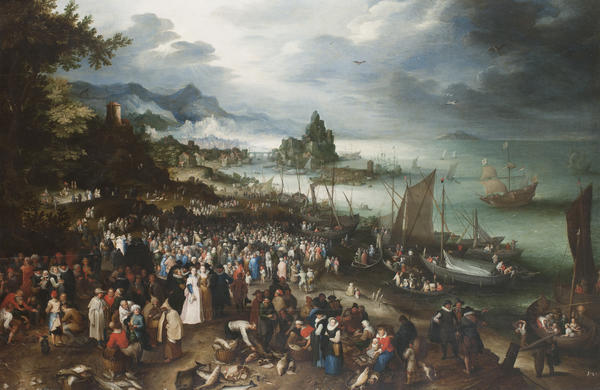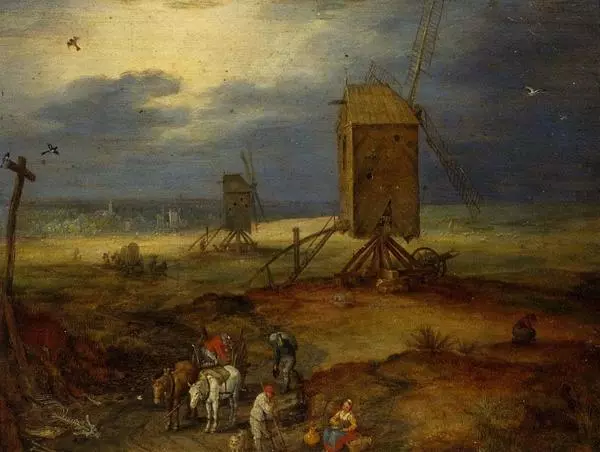The painting gifted for the 100th anniversary of the museum by the Ministry of Culture of RSFSR was inventoried as the work of unknown artist of the 17th century People by the Seashore. However, with the help of contemporary research methods it was identified that techniques and picturesque materials were used at a later period and correspond to late 19th — early 20th century. The painting is an exact replica from the undersigned and dated (1598) work of Jan Bruegel the Elder which is kept with the collection of Munich Old Pinacotheca. Visually, the original and the replica of the Radishchev Museum look absolutely identical — painted on the wood with oils, have identical dimensions and color spectrum. Only one detail is missing in the replica — signature and date in the right corner of the original: “BRVEGEL.1598”. The quality of execution points out to a high professionalism of the copyist. Obviously, someone from the collectors ordered it to a professional artist.
“And it came to pass, that, as the people passed upon him to hear the word of God, he stood by the lake of Gennesaret, and saw two boats standing by the lake: but the fishermen were gone out of them, and were washing their nets. And he entered into one of the boats, which was Simon”s, and prayed him that he would thrust out a little from the land. And he sat down, and taught the people out of the boat”. (Luke 5, 1-10; Mark, 1-9; Matthew, 18-20).
“And it came to pass, that, as the people passed upon him to hear the word of God, he stood by the lake of Gennesaret, and saw two boats standing by the lake: but the fishermen were gone out of them, and were washing their nets. And he entered into one of the boats, which was Simon”s, and prayed him that he would thrust out a little from the land. And he sat down, and taught the people out of the boat”. (Luke 5, 1-10; Mark, 1-9; Matthew, 18-20).
Though the picture illustrates these lines from the Holy Gospel, it is difficult to guess about the storyline — only a small figure of Christ on the back of the fish boat at the back of the picture evidences of this. The only detail –a medieval castle on the isle — points out to the “Promised Land”. Dutch and German masters of the 15th-17th centuries referred to religious storylines, in order to unveil the nature and daily routine life of the entire country. The depicted landscape is not a shore of Gennesaret lake in Palestine at all, but rather a shore of the North Sea so dear to the artist. A crowded scene on the shore can be called an illustrated encyclopedia of life of a seaside Dutch town of the 16th century where different layers of the society are presented.
The town deals with fishery: the artist portrays fishermen pulling the nets and selling fish as well as the townsfolk walking along the shore. The Netherlands of that time is a Spanish province, thus many characters are attired in the latest Spanish fashion. The Spanish apparel is of dark colors, light dresses are the result of Italian-French influences. On the cusp of the 16th and 17th centuries different accessories become fashionable; one of the most important of which is a handkerchief. It is big, of fine texture, decorated with laces, it is worn in hands.
There are several types of сollars in vogue: a famous “gorguera” or “ruff” — Toby collar, totally hiding the neck — still preserved; more open ones — high standing and turndown collars started appearing. The painting explicitly demonstrates class-related differences in the attire. Light dresses of two women are the attire attributed to the aristocracy. They walk and watch what is happening as a theatrical performance. The woman waiting in a queue for fish is a townswoman. She wears simpler clothes — dark dress with “gorguera”, on her head is a bonnet.





